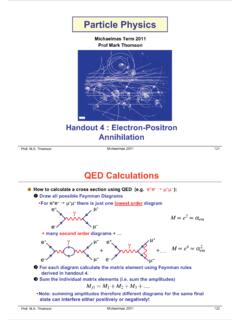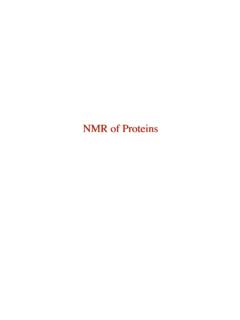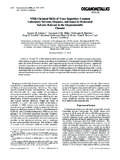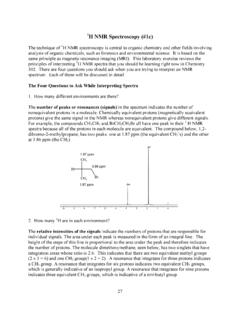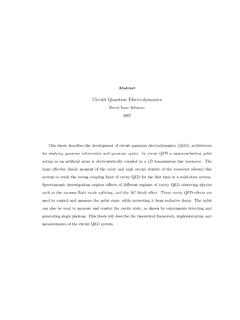Transcription of Particle Physics - University of Cambridge
1 Prof. ThomsonMichaelmas 2009451 Particle PhysicsMichaelmas Term 2009 Prof Mark ThomsonHandout 13 : Electroweak Unification and the W and Z Bosons Boson Polarization StatesProf. ThomsonMichaelmas 2009452 In this handout we are going to consider the decays of W and Z bosons, forthis we will need to consider the polarization. Here simply quote results althoughthe justification is given in Appendices A and B A real ( not virtual) masslessspin-1 boson can exist in twotransversepolarization states, a massivespin-1 boson also can be longitudinally polarized Boson wave-functions are written in terms of the polarization four-vector For a spin-1 boson travelling along the z-axis, the polarization four vectors are.
2 TransversetransverselongitudinalLongitud inal polarization isn t present for on-shell massless particles , the photon can exist in two helicity states (LHandRHcircularly polarized light)Prof. ThomsonMichaelmas 2009453W-Boson Decay To calculate the W-Boson decay rate first consider Want matrix element for : Incoming W-boson : Out-going electron : Out-going :Vertex factor :Note, nopropagator This can be written in terms of the four-vector scalar product of the W-bosonpolarization and the weak charged current withW-Decay : The Lepton CurrentProf.
3 ThomsonMichaelmas 2009454 First consider the lepton current Work in Centre-of-Mass framewith In the ultra-relativistic limit only LH particlesandRH anti-particlesparticipatein the weak interaction soNote:Chiral projection operator, see or Helicity conservation , or ThomsonMichaelmas 2009455 We have already calculated the current when considering From page 128 we have for For the charged current weak Interaction we only have to consider this singlecombination of helicities and the three possible W-Boson polarization states:Prof.
4 ThomsonMichaelmas 2009456 For a W-boson at rest these become: Can now calculate the matrix element for the different polarization stateswithDecay at rest :Ee= E = mW/2 givingProf. ThomsonMichaelmas 2009457 The angular distributions can be understood in terms of the spin of the particles -1+1cos -1+1cos -1+1cos M-M+ML The differential decay rate (see page 26) can be found using:where p* is the momentum of the final state particles , hereProf. ThomsonMichaelmas 2009458 Hence for the three different polarisations we obtain: Integrating over all angles using Gives For a sample of unpolarized W boson each polarization state is equally likely,for the average matrix element sum over all possible matrix elementsandaverageover the three initial polarization states The total W-decay rate is independent of polarization.
5 This has to be the caseas the decay rate cannot depend on the arbitrary definition of the z-axis For a sample of unpolarized W-bosons, the decay is isotropic (as expected) Prof. ThomsonMichaelmas 2009459 For this isotropic decay The calculation for the other decay modes (neglecting final state Particle masses) is same. For quarks need to account for colourandCKM matrix. No decays totop the top mass (175 GeV) is greater than the W-boson mass (80 GeV) Unitarity of CKM matrix gives, thus the total decay rate : GeV(our calculation neglected a 3% QCDcorrection to decays to quarks )Prof.
6 ThomsonMichaelmas 2009460 From W to Z The W bosons carry the EM charge - suggestive Weak are EM forces are related. W bosons can be produced in e+e-annihilation With just these two diagrams there is a problem:the cross section increases with energyand at some point violates QM unitarityUNITARITY VIOLATION: when QM calculation gives larger flux of W bosons than incoming flux of electrons/positrons Problem can be fixed by introducing a new boson, the Z. The new diagram interferes negatively with the above two diagrams fixing the unitarity problem Only works if Z, , Wcouplings are related: need ELECTROWEAK UNIFICATIONThe Local Gauge PrincipleProf.
7 ThomsonMichaelmas 2009461(see the Appendices A,C and D for more details) All the interactions between fermions and spin-1 bosons in the SM are specified by the principle of LOCAL GAUGE INVARIANCE To arrive at QED, require Physics to be invariant under the local phasetransformationof Particle wave-functions Note that the change of phase depends on the space-time coordinate: Under this transformation the Dirac Equation transforms as To make Physics , the Dirac equation, invariant under this localphase transformation FORCEDto introduce a massless gauge boson.
8 +The Dirac equation has to be modified to include this new field: The modified Dirac equation is invariant under local phase transformations if:Gauge InvarianceProf. ThomsonMichaelmas 2009462 For Physics to remain unchanged must have GAUGE INVARIANCEof the new field, physical predictions unchanged for Hence the principle of invariance under local phase transformations completelyspecifies the interaction between a fermion and the gauge boson ( photon):interaction vertex:(see )QED ! The local phase transformation of QED is a unitary U(1) extend this QED to QCDProf.
9 ThomsonMichaelmas 2009463 Suppose there is another fundamental symmetry of the universe, say invariance under SU(3) local phase transformations require invariance under are the eight 3x3 Gell-Mann matrices introduced in handout 7whereare 8 functions taking different values at each point in space-time8 spin-1 gauge bosonswave function is now a vector in COLOUR SPACEQCD ! QCD is fully specified by require invariance under SU(3)localphasetransformationsCorrespond s to rotating states in colour space about an axis whose direction is different at every space-time pointinteraction vertex: Predicts 8 massless gauge bosons the gluons (one for each ) Also predicts exact form for interactions between gluons, the 3 and 4 gluon vertices the details are beyond the level of this courseProf.
10 ThomsonMichaelmas 2009464SU(2)L: The Weak Interaction The Weak Interaction arises from SU(2)local phase transformationswhere the are the generators of the SU(2) symmetry, thethreePaulispin matrices The wave-functions have two components which, in analogy with isospin,are represented by weak isospin The fermions are placed in isospin doublets and the local phase transformationcorresponds to3 Gauge Bosons Weak Interaction only couples to LH particles /RH anti- particles , hence only placeLH particles /RH anti-particlesin weak isospin doublets.



